-
 bitcoin
bitcoin $107015.826941 USD
-2.18% -
 ethereum
ethereum $3637.352324 USD
-5.18% -
 tether
tether $0.999831 USD
-0.02% -
 xrp
xrp $2.338078 USD
-6.23% -
 bnb
bnb $998.272150 USD
-6.97% -
 solana
solana $167.598257 USD
-10.12% -
 usd-coin
usd-coin $0.999863 USD
0.01% -
 tron
tron $0.282573 USD
-5.09% -
 dogecoin
dogecoin $0.169891 USD
-7.39% -
 cardano
cardano $0.557554 USD
-7.03% -
 hyperliquid
hyperliquid $39.914802 USD
-5.85% -
 chainlink
chainlink $15.414549 USD
-9.97% -
 bitcoin-cash
bitcoin-cash $510.361911 USD
-4.26% -
 ethena-usde
ethena-usde $0.999194 USD
-0.03% -
 stellar
stellar $0.282092 USD
-6.07%
What does "insufficient funds for gas" mean in Coinbase Wallet?
You need native crypto like ETH or MATIC for gas—even with token balance, no gas means failed transactions. Keep a small reserve to avoid errors.
Oct 12, 2025 at 08:18 am
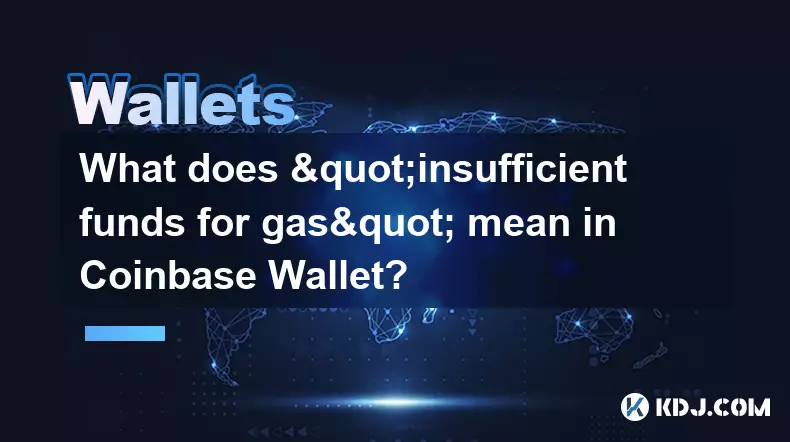
Understanding Insufficient Funds for Gas in Coinbase Wallet
1. When users encounter the message 'insufficient funds for gas' in Coinbase Wallet, it indicates that the wallet does not contain enough cryptocurrency to cover the network transaction fee. This fee, commonly known as gas, is required to execute any transaction on blockchains like Ethereum. Even if a user has tokens to send, the absence of native currency—such as ETH on Ethereum or MATIC on Polygon—means the transaction cannot be processed.
2. Gas fees are paid in the native token of the blockchain being used. For example, sending a token like USDC on the Ethereum network requires ETH to pay for gas. If the wallet holds only USDC but no ETH, the transaction will fail with the insufficient funds error. Users often overlook this requirement, assuming their balance of a specific token is sufficient for all operations.
3. The amount of gas needed varies depending on network congestion and transaction complexity. Simple transfers require less gas than interactions with smart contracts, such as swapping tokens or staking. During peak times, gas prices spike, increasing the minimum ETH required to complete a transaction. Users must monitor current gas rates and ensure they maintain a small reserve of the native token.
4. Coinbase Wallet does not automatically convert one token into another to cover gas fees. Unlike centralized exchanges that may abstract these details, self-custody wallets place full responsibility on the user. There is no built-in mechanism to use ERC-20 tokens to pay for gas, making native token management essential for uninterrupted usage.
5. Some blockchain networks have implemented improvements to ease this burden. For instance, the EIP-1559 upgrade changed how Ethereum gas fees are calculated and partially burned, offering more predictable pricing. However, the core requirement remains: users must possess native tokens to initiate transactions, regardless of other balances present in the wallet.
Common Scenarios Leading to Gas Errors
1. A user receives BEP-20 tokens via the Binance Smart Chain but forgets to acquire BNB for gas. Attempting to transfer these tokens triggers an error because BNB is mandatory for transaction validation on that network. Without even a small amount of BNB, the wallet interface blocks the action.
2. New users importing wallets from other platforms may assume all assets are usable immediately. If the imported wallet lacks native tokens, they cannot interact with decentralized applications (dApps), claim airdrops, or approve token allowances. This limitation often confuses beginners unfamiliar with blockchain mechanics.
3. Token swaps within decentralized exchanges frequently involve two steps: approving the token and executing the swap. Both steps require gas. Users who attempt to swap tokens without sufficient ETH might succeed in approval but fail at execution, losing gas on the first step and needing more funds to retry.
4. Network selection mistakes contribute to confusion. A user might mistakenly try to send Ethereum-based tokens using a Solana dApp, leading to errors. Ensuring the correct network is active in the wallet settings prevents such issues, but incorrect configuration still results in failed transactions due to missing gas tokens.
5. Bulk actions like NFT minting during high-demand drops demand precise gas estimation. Users may miscalculate the required ETH and find themselves unable to complete the mint even if they hold the necessary payment tokens. Real-time gas tracking tools help avoid this pitfall.
How to Prevent Gas-Related Transaction Failures
1. Always keep a small reserve of the native cryptocurrency for each blockchain you use. For Ethereum, maintaining 0.01–0.05 ETH ensures readiness for unexpected transactions. On Polygon, holding at least 1–2 MATIC serves the same purpose. These amounts typically cover multiple standard operations.
2. Use trusted faucet services when testing on testnets. Faucets distribute free tokens for development and experimentation. Ropsten, Goerli, and Mumbai testnets offer faucets for ETH and MATIC, allowing users to practice transactions without financial risk.
3. Enable gas price alerts through blockchain explorers or wallet integrations. Monitoring tools notify users of sudden spikes, enabling them to delay non-urgent transactions until fees stabilize. Lowering the transaction priority during off-peak hours reduces costs significantly.
4. Double-check the network before initiating any transaction. Coinbase Wallet supports multiple chains, and switching between them is manual. Confirming that the active network matches the token’s blockchain avoids wasted attempts and failed gas payments.
5. Never rely solely on token balances when interacting with smart contracts. Always verify native token availability. A zero ETH balance renders a wallet functionally inert on Ethereum, regardless of other holdings.Frequently Asked Questions
Why can’t I send my tokens even though I have a balance? You likely lack the native cryptocurrency needed for gas. Tokens like USDT or DAI cannot pay transaction fees on Ethereum; only ETH can. Acquire a small amount of ETH to enable transfers.
Can I use stablecoins to pay for gas fees? No. Gas fees must be paid in the native token of the blockchain. Stablecoins operate as ERC-20 tokens and do not fulfill the consensus requirements for network validation.
What happens if I try to send a transaction without enough gas? The transaction will fail and remain pending or revert. The network rejects it before processing, and any gas already spent is lost. You must retry with adequate funds.
How do I get ETH for gas without buying it? Some platforms offer small ETH grants for onboarding users. Developers may receive testnet ETH from faucets. For mainnet usage, purchasing ETH through an exchange or receiving it from another wallet is necessary.
Disclaimer:info@kdj.com
The information provided is not trading advice. kdj.com does not assume any responsibility for any investments made based on the information provided in this article. Cryptocurrencies are highly volatile and it is highly recommended that you invest with caution after thorough research!
If you believe that the content used on this website infringes your copyright, please contact us immediately (info@kdj.com) and we will delete it promptly.
- XRP, BlockDAG, and Presales: Decoding the Hottest Crypto Trends
- 2025-11-04 22:50:12
- $PLAI Token Set to Launch on KuCoin: Mainnet Goes Live!
- 2025-11-04 23:10:02
- Moonwell's Oracle Exploit: A Wake-Up Call for DeFi Price Feeds
- 2025-11-04 23:05:01
- Chainlink (LINK) Crypto Explosion: Will It Hold or Fold?
- 2025-11-04 23:10:14
- Nature's Miracle, Super Point, and Stablecoin: A New Era for Loyalty Rewards?
- 2025-11-04 22:40:02
- ADA Slowdown, Maxi Doge, and the Meme Coin Mania: What's the Hype?
- 2025-11-04 20:50:12
Related knowledge

Reviewing Smart Contract Permissions: A Critical Security Step
Nov 01,2025 at 04:55pm
Understanding Decentralized Exchanges in the Crypto Ecosystem1. Decentralized exchanges (DEXs) have reshaped how traders interact with digital assets ...
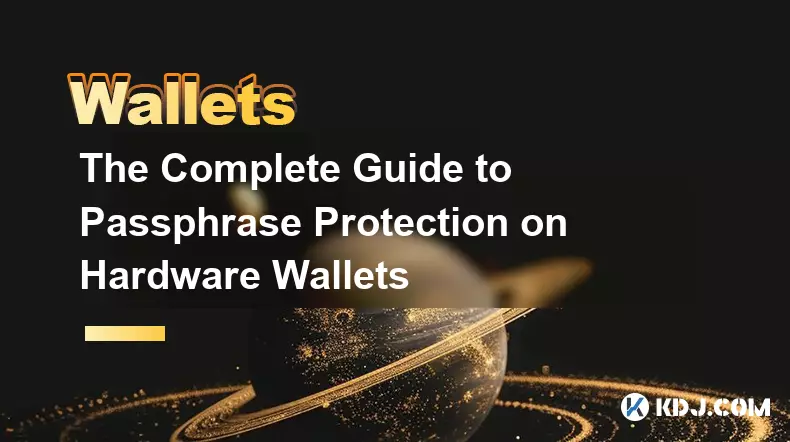
The Complete Guide to Passphrase Protection on Hardware Wallets
Nov 03,2025 at 10:37am
Understanding Passphrases in Hardware Wallets1. A passphrase, often referred to as a 25th word, adds an additional layer of security beyond the standa...
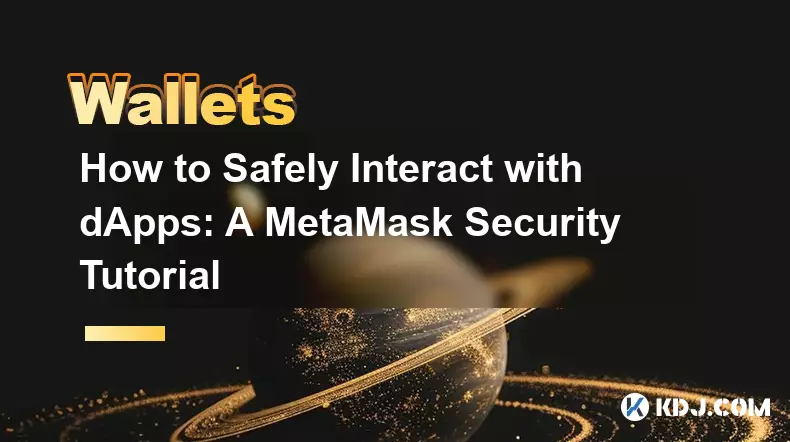
How to Safely Interact with dApps: A MetaMask Security Tutorial
Nov 04,2025 at 02:54am
Understanding dApp Interaction Risks1. Decentralized applications (dApps) operate on blockchain networks, enabling users to trade tokens, lend assets,...

Software Wallet Security Vulnerabilities You Need to Know
Nov 01,2025 at 11:37am
Common Exploits Targeting Software Wallets1. Phishing attacks remain one of the most widespread threats to software wallet users. Cybercriminals desig...
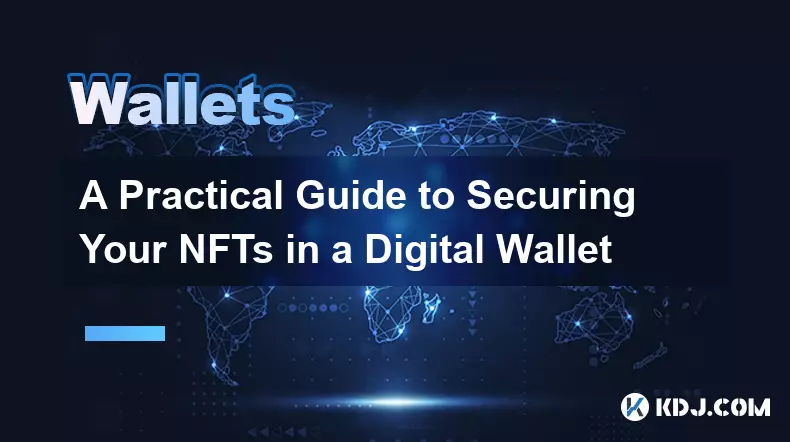
A Practical Guide to Securing Your NFTs in a Digital Wallet
Nov 03,2025 at 04:55am
Understanding NFT Wallet Security Fundamentals1. NFTs, or non-fungible tokens, exist on blockchain networks such as Ethereum, Solana, and Polygon, mak...
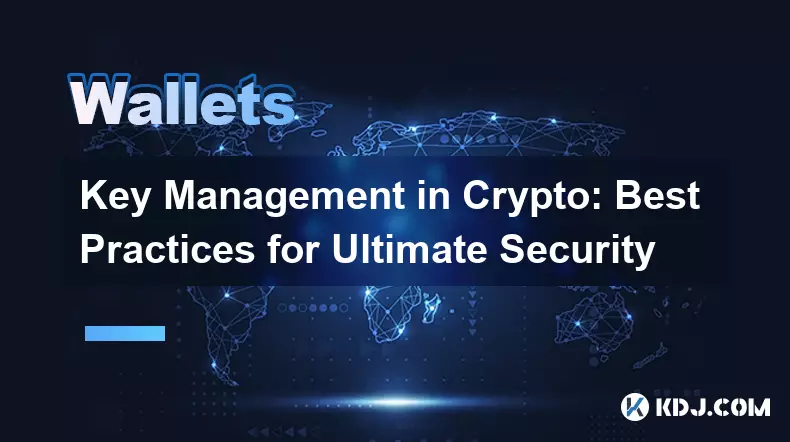
Key Management in Crypto: Best Practices for Ultimate Security
Nov 04,2025 at 05:18am
Understanding the Importance of Key Management in Cryptocurrency1. In the world of cryptocurrency, private keys serve as the ultimate proof of ownersh...

Reviewing Smart Contract Permissions: A Critical Security Step
Nov 01,2025 at 04:55pm
Understanding Decentralized Exchanges in the Crypto Ecosystem1. Decentralized exchanges (DEXs) have reshaped how traders interact with digital assets ...

The Complete Guide to Passphrase Protection on Hardware Wallets
Nov 03,2025 at 10:37am
Understanding Passphrases in Hardware Wallets1. A passphrase, often referred to as a 25th word, adds an additional layer of security beyond the standa...

How to Safely Interact with dApps: A MetaMask Security Tutorial
Nov 04,2025 at 02:54am
Understanding dApp Interaction Risks1. Decentralized applications (dApps) operate on blockchain networks, enabling users to trade tokens, lend assets,...

Software Wallet Security Vulnerabilities You Need to Know
Nov 01,2025 at 11:37am
Common Exploits Targeting Software Wallets1. Phishing attacks remain one of the most widespread threats to software wallet users. Cybercriminals desig...

A Practical Guide to Securing Your NFTs in a Digital Wallet
Nov 03,2025 at 04:55am
Understanding NFT Wallet Security Fundamentals1. NFTs, or non-fungible tokens, exist on blockchain networks such as Ethereum, Solana, and Polygon, mak...

Key Management in Crypto: Best Practices for Ultimate Security
Nov 04,2025 at 05:18am
Understanding the Importance of Key Management in Cryptocurrency1. In the world of cryptocurrency, private keys serve as the ultimate proof of ownersh...
See all articles










































































